Scale of Measurement in SPSS
In this section, we will learn about the measure option in SPSS. The measure is a property that is used to define the label of measurement used in a variable. It’s a very important property. The treatment of data and the choice of the right statistical test depend upon the kind of measure we have taken for the variable. If we select any variable, we can see three types of measure, as shown in the following diagram:
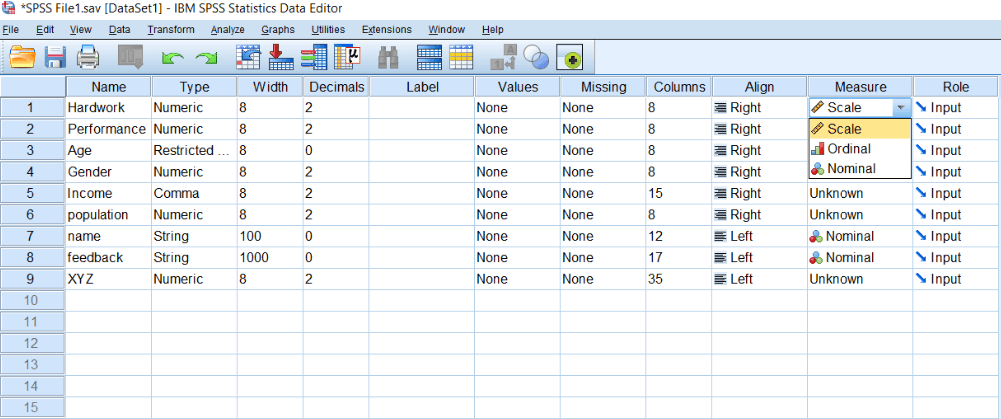
So we have Nominal, Ordinal, and Scale type of measurement. These are the different types of measures, but all in all, if we have to understand the measures, there are four types of measurement in social science research. They are referred to as Nominal, Ordinal, Interval, and Ratio scales of measurement. So we will quickly try to understand what they are and how we can use them for the SPSS. Measure and scale of measurement both are the same things.
The Measure is used to measure something or something that refers to the property that we have focusing upon. For example, if we are from an anthropology background, we must be interested in measuring blood glucose levels. If we are from a psychology background, we must be interested in measuring the motivation and personality of the individual. If we are from a management background, we must be interested in the management process. These are different types of variables. For studying the variables, we need to measure them. We need to exact quantify them. The ordinal, nominal, and scale measurements are used for quantification.
Scale of Measurement
The Scale of measurement refers to the measurement scales that can be used for measuring any socio or psychometric property or any variable that we are studying. All the scales of measurement can be categorized into two parts. The first one is a Categorical scale of measurement, and the second one is a Continuous scale.
The Categorical scale is also known as Discrete scales. So we need a categorical scale to measure the categorical variable. The categorical variable comes into two formats as Nominal variables and Ordinal variables.
So, Nominal variables are those variables that come in the format of perfect categories or mutually exclusive categories. It means if we are part of one category, we cannot be part of another category. For example, the Gender variable has two labels male and female. So if we are part of one category, we are already excluded from other categories. So these categories are mutually exclusive. That’s why in SPSS, this scale has been shown through a Venn diagram with different colors like this:
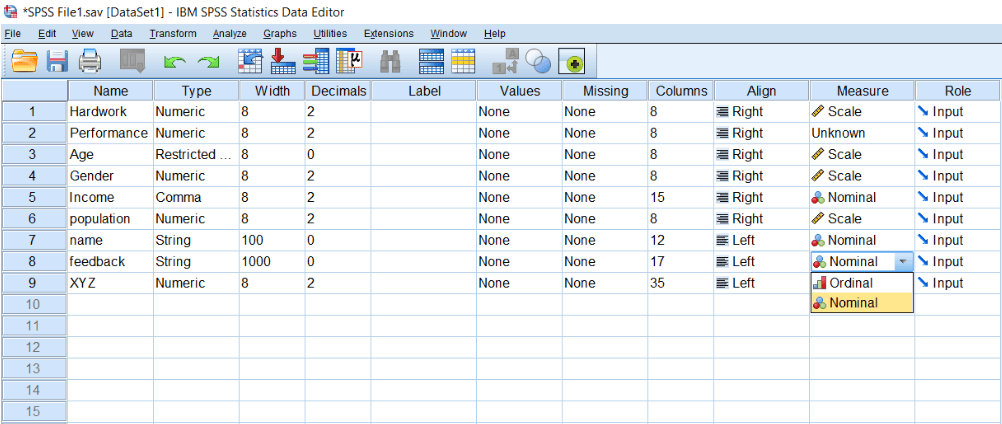
In the above diagram, we can see a Venn diagram of a nominal scale with three different colors green, blue, and red, indicating the mutual exclusiveness of the categories that we are defining.
If we look at the Ordinal variables in the following diagram, we can see three different colors again, but they seem to be ranked order like bars.
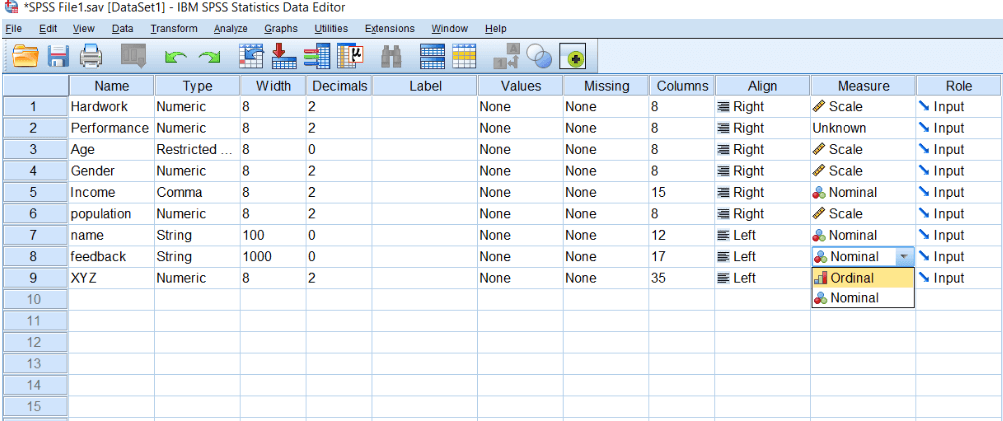
So Ordinal scale refers to the scale in which the variables can be categorized, but they can also be ranked order. For example, the height of a student in the class can be measured in the meters. So, in this case, it will be a continuous measure. But if we measure the height of a student in the class as short height, medium height, and tall height, we can arrange short, medium, and tall in ascending or descending order. So ordinal scales are basically those nominal scales that can be ranked order. For example, the height of a student, socioeconomic status.
There are two types of Continuous scales, which are Interval scale and Ratio scale. Interval scale refers to the liquor type of scale which ask for the opinion on certain topic and responses vary from Strongly disagree to Strongly agree, and in between, we can have other options. So we will define a value of 0 to strongly disagree. We will also define 1 2, and 3 as undecided and 4 to strongly agree. It is known as the interval scale because the idea is that the measurement between two points of the scale is the same throughout the scale. So if the value between 0 to 1 is x, it means the value between 1 to 2, 2 to 3, 3 to 4 is also x like this:
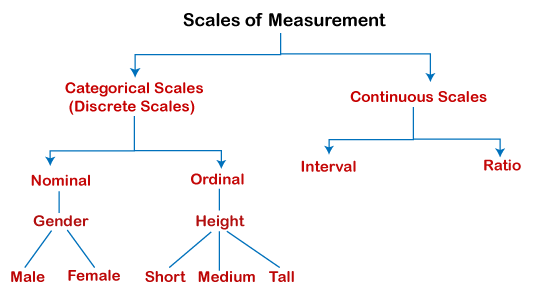
So, this is a scale that divides our entire measurement into an equal number of parts, which typically happens in the liquor scale. So that is our interval scale. This scale superficially seems that it has a 0, but truly, it does not have an absolute zero. For example, suppose we measure the attitude of individuals or intelligence of the individual or personality treats of the individual. In that case, it is impossible for us to find the person who has zero personality treats or 0 attitudes or 0 motivations. However, we are assigning a 0 value here. So whatever the case may be, we are not going to have an individual who is 0 in terms of the trade that we measure, especially when they are the social trades like personality, attitude, motivation, and leadership. So the internal scale has one limitation, i.e., the lack the absolute zero.
This thing is available in the case of a Ratio scale, which contains an absolute zero. So absolute zero is the point where the movement among the ion stops, and we have the 0 temperature at that point. So absolute zero means the property that we are measuring is absent. For example, if we measure blood glucose level, and if we say that blood glucose level was 0, it means blood glucose was totally absent. Similarly, if we measure the income and report income as zero, it means the person had no income. It means absolute zero is possible in case of a ratio scale.
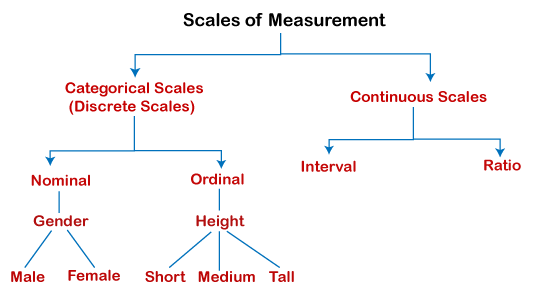
Now in SPSS, if we look at the processor, we will see nominal, ordinal, and scale variables.
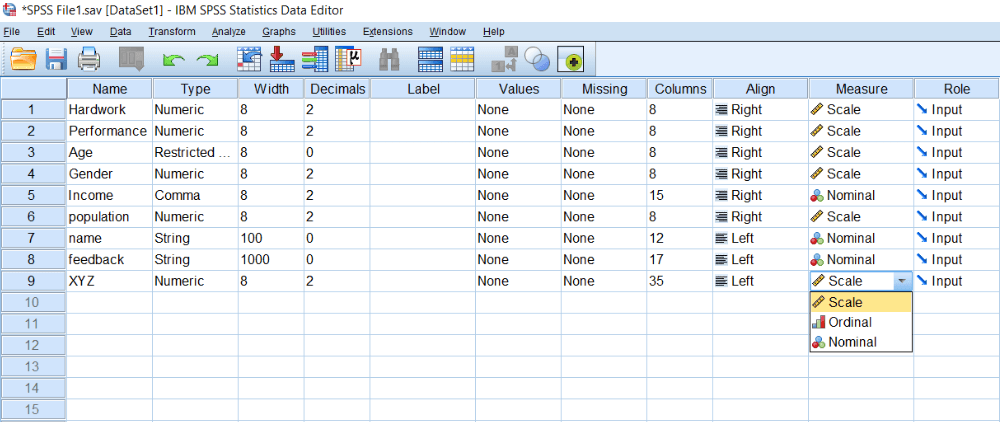
In SPSS, for all practical purposes, it combines the Interval and Ratio scale into one and called Scale variable. We can see the meter scale kind of symbol for the scale variable, so it is showing that it’s a quantitative variable. However, the quantitative variables are either interval variables or ratio variables.
